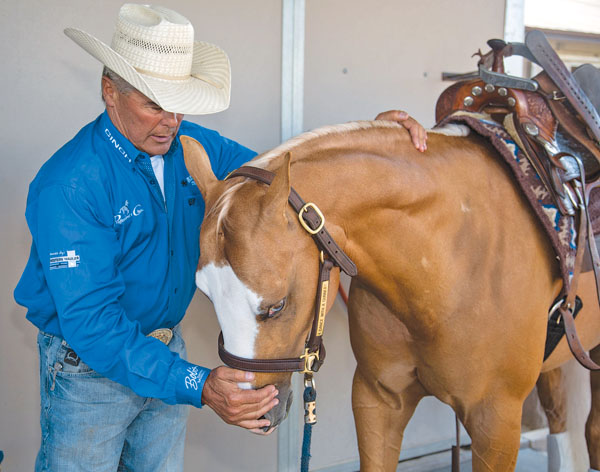Whether you buy or raise your next performance prospect, you’ll have made a significant investment by the time you actually get to ride and show him. Once you get past the purchase price or breeding fee, it costs as much money and time to train an average or mediocre prospect as it does one with true talent and trainability, but you end up with less in the end. That’s why it’s just smart to begin with the very best prospect you can find.
[MORE: Buying Young Horses]

I’ve evaluated thousands of young horses, including ones for sale and others owned by customers who want to place them in training. I’ve learned to look for certain desirable qualities, including clues to talent and trainability. I’ve also learned clues that tell me to keep looking. I’ll go over key points, so you can benefit from my experience. It’s taken years of buying horses and making mistakes to have learned what I’m going to tell you.
Initial Criteria
Let’s start with an imaginary pen of yearlings. They’re all healthy, without serious flaws in conformation. Initially, I look at three things in each, but not in this order: movement, breeding, and looks. Movement matters, for instance, but isn’t enough for an unattractive horse to make it to the top. Breeding matters, too. It’s a reasonable predictor of ability (though not always), and can make a difference to future buyers. However, I need to like the horse before I like the papers. A judge won’t have a copy of the papers when I’m out in the arena showing a horse I’ve chosen.
A prospect doesn’t have to be drop-dead pretty for me to like him, but he does need to have a certain look—something that’s a little different and that says “show horse.” You can’t define what makes a woman pretty or a man handsome, but you know “wow,” or star power when you see it. It’s the same with horses. Star power will get you that extra look, extra half-point, and extra dollars at sale time. It’s there or it’s not. It’s a tremendous extra advantage; why not have it to start with? A homely, average horse has something to overcome before he ever makes his run.
[MORE: 11 Tips for Horse Shopping]

I’m critical about the way a prospect moves. I’ve been a judge, and I know what gets my attention about an entry and makes me want to see more. Again, it’s that “something special” that sets a horse apart, and I look for it at the start. It can be his lope, how he rolls back as I’m watching him in a round pen, how he packs his neck, or how he’s able to use his shoulders. I want the horse that’s athletic enough to make an observer go, “Wow, that was really cool.” I don’t always find it or get it, but it’s definitely something I strive for every time.
Going Further
If a prospect still has my attention at this point, I start looking for clues about his mind. Without a good mind, and the trainable attitude that goes with it, none of the rest matters. With prospects still too young to have been started under saddle, you don’t get to evaluate them from the saddle. But you still can learn a lot by being observant.
I pay a lot of attention to how a horse handles his space and mine. For instance, if he’s in a stall, and I step inside, I want the horse that goes to the back of the stall and turns to look at me. If he keeps his butt turned to me, he could just be timid, and that’s OK, especially if he hasn’t been handled much. But if he pins his ears, acts like he wants to kick, or runs over me, that’s not good, because it shows lack of respect and desire to be dominant.
[MORE: Mistakes Horse Buyers Make]
I’m big on how a horse uses his ears as I’m around him. I want him to look at me, and express curiosity about things instead of animosity. I want to see the same thing in a prospect that’ll be used on cattle. I’m not impressed by a colt that lays his ears back when I touch him or when he sees a cow. He’s saying, “I don’t like what you’re doing to me, and I don’t like cattle, either.” I want the horse whose eyes bug out and whose ears starch forward. I’ll pass on the one that narrows his eyes, flattens his ears, and goes after something, whether it’s me or a cow.
When I’m in a horse’s stall or pen, I like to place one palm on the front of his face, push on it, and see what he does. If he gives to light pressure from my hand, that’s positive—it’s a clue that he’s not resistant by nature. It’s not so good if he pushes against my hand, or tries to avoid it by pushing his whole body at me. It can mean he’s not a respectful individual to start with, and that he’ll fight your efforts to train him.

A multiple AQHA world champion, Avila has also won three NRCHA Snaffle Bit Futurities, the NRHA Futurity, and two World’s Greatest Horseman titles. He received the AQHA Professional Horseman of the Year honor. His Avila Training Stables, Inc., is in Temecula, California. Learn more at bobavila.net.

